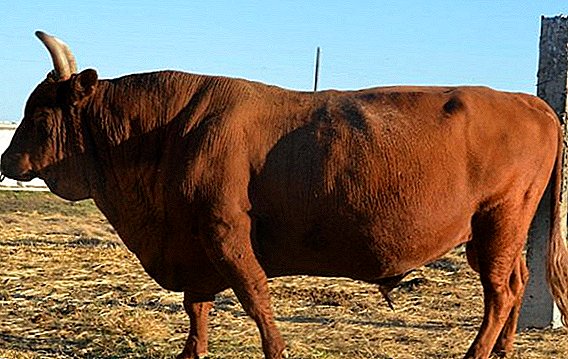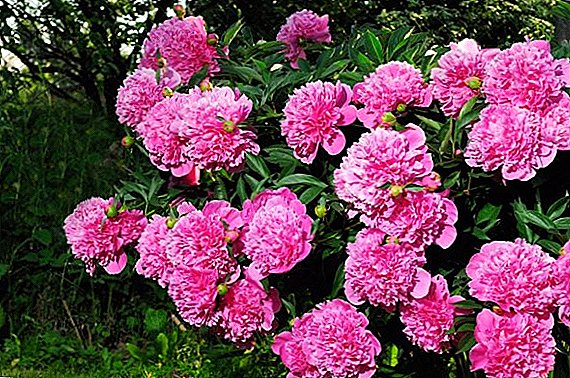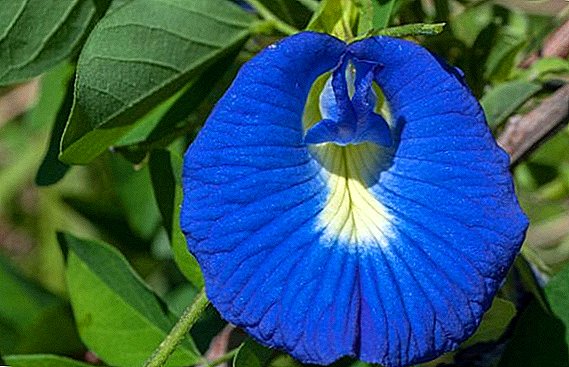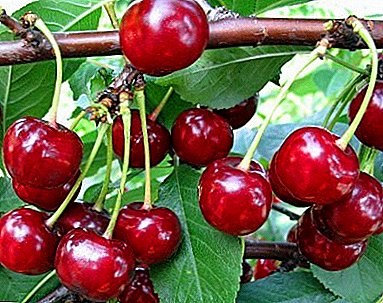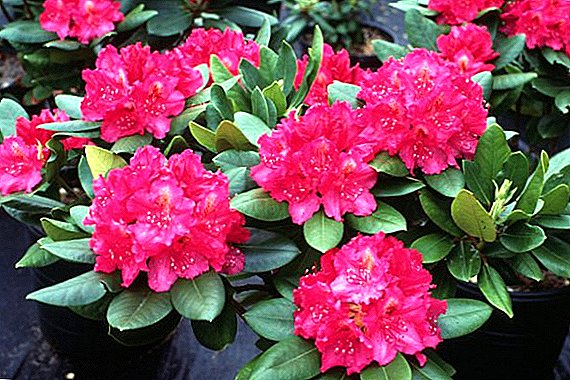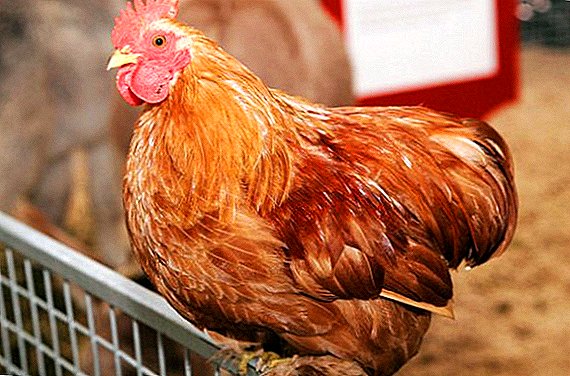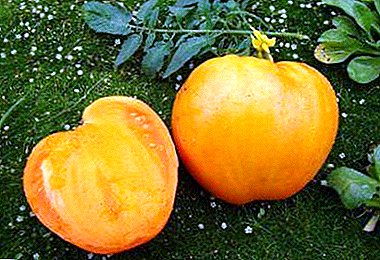
For all lovers of large-fruited yellow tomatoes there is a variety that cannot but interest. It is called the Honey Giant. About this handsome and will be discussed in our article.
From it you will learn what a tomato looks like, what are its main characteristics and features of growing. We will also tell about the origin and application of these tomatoes, about its ability to resist various diseases and pests.
Honey Giant Tomato: variety description
| Grade name | Honey Giant |
| general description | Mid-season, indeterminate variety of tomatoes |
| Originator | Russia |
| Ripening | 100-110 days |
| The form | Fruits are large, flattened |
| Colour | Yellow |
| Average tomato mass | 300-400 grams |
| Application | Mostly consumed fresh |
| Yield varieties | up to 15 kg per square meter |
| Features of growing | Variety demanding fertilizer and watering |
| Disease resistance | It has good disease resistance. |
 The Honey Giant is an indeterminate, standard variety. The plant is rather tall, about 150 cm. In terms of ripening, it refers to medium early, that is, 100–110 days pass from transplanting to ripening of the first fruits. This type of tomato has a fairly good resistance to the main types of diseases. Well suited for cultivation in open ground and in greenhouses.
The Honey Giant is an indeterminate, standard variety. The plant is rather tall, about 150 cm. In terms of ripening, it refers to medium early, that is, 100–110 days pass from transplanting to ripening of the first fruits. This type of tomato has a fairly good resistance to the main types of diseases. Well suited for cultivation in open ground and in greenhouses.
Mature fruits are yellow in color, flattened in shape. As a rule, they have 300-400 grams by weight, in rare cases they reach 550-600. The number of chambers 5-6, the dry matter content up to 6%. The collected fruits tolerate long-term storage and transportation, for this quality they are valued by farmers who grow tomatoes for sale in large quantities.
Tomatoes "Honey Giant" - the fruit of works of domestic specialists, the variety was bred in 2001, after 2 years received state registration. Almost immediately became known to fans of large-fruited yellow varieties of tomatoes for their high commercial quality.
For the cultivation of tomato "Honey Giant" in the open field suitable southern regions, as the variety of heat-loving and sudden temperature changes can affect the yield. In film shelters can be successfully grown in areas of the middle band.
You can compare the weight of fruits with other varieties in the table below:
| Grade name | Fruit weight |
| Honey Giant | 300-400 grams |
| Big Mama | 200-400 grams |
| Banana Orange | 100g |
| Honey saved | 200-600 grams |
| Rosemary pound | 400-500 grams |
| Persimmon | 350-400 grams |
| Dimensionless | up to 100 grams |
| Favorite F1 | 115-140 grams |
| Pink flamingo | 150-450 grams |
| Black moor | 50 grams |
| Early love | 85-95 grams |
 Read also on our website: how to get a good crop of tomatoes in the open field and year-round winter greenhouses.
Read also on our website: how to get a good crop of tomatoes in the open field and year-round winter greenhouses.And also, the secrets of early farming varieties or how to care for tomatoes with fast ripening correctly.
Specifications
Tomatoes of this type have excellent taste and very good fresh. For whole-fruit canning is not suitable because of the size, but you can use them for barrel pickling. Juices and pastes from the fruit "Honey giant" do not.
In addition to the many advantages, the Honey Giant is known for its good yields. With good care you can get up to 4-5 kg from a bush. If you choose a planting scheme 2-3 plants per square. m, it turns out to 15 kg, which is a pretty good indicator.
You can compare it with other tomatoes in the table:
| Grade name | Yield |
| Honey Giant | up to 15 kg per square meter |
| Peter the First | 3.5-4.5 kg from a bush |
| Pink flamingo | 2.3-3.5 kg per square meter |
| Tsar Peter | 2.5 kg from a bush |
| Alpatieva 905A | 2 kg from a bush |
| Favorite F1 | 19-20 kg per square meter |
| Lyalafa | 20 kg per square meter |
| Right size | 12-13 kg per square meter |
| Dimensionless | 6-7,5 kg from a bush |
| Nikola | 8 kg per square meter |
| Demidov | 1.5-4.7 kg from a bush |
Among the main advantages of this variety note:
- disease resistance;
- beautiful presentation;
- high varietal quality of the fruit;
- good yield.
Among the shortcomings noted that this type of picky fertilizer and irrigation regime. This can be somewhat difficult to care, especially for novice gardeners.
A photo


Features of growing
The main features of the variety are the size and color of its fruits. Also worth noting is a very good resistance to diseases. Many note the high sugar content in ripe tomatoes. Since the bushes of this plant are quite high, they need a garter, and the branches are in props, since the fruits are quite heavy. Shrub taken form in two stalks. At the growth stage, it responds well to supplements containing potassium and phosphorus, in the future you can switch to complex ones.
Diseases and pests
 Fungal diseases "Honey Giant" is extremely rare. The only thing to fear is diseases associated with improper care. To avoid such difficulties when growing, you should regularly ventilate the room where your tomatoes grow and observe the mode of watering and lighting.
Fungal diseases "Honey Giant" is extremely rare. The only thing to fear is diseases associated with improper care. To avoid such difficulties when growing, you should regularly ventilate the room where your tomatoes grow and observe the mode of watering and lighting.
Of the harmful insects may be exposed to melon gum and thrips, against them successfully used the drug "Bison". In the open ground, a bear and slugs can deal a big blow to these bushes. They are fought with the help of loosening the soil, as well as using dry mustard or spicy ground pepper diluted in water, a spoon for 10 liters and sprinkling the soil around, the pest then disappears.
Of the pests that are most likely to harm in greenhouses - this is a melon aphid and thrips, against them also use the drug "Bison". Like many other types of tomatoes can be exposed to the greenhouse whitefly invasion, struggling with it with the help of the drug "Confidor".
Conclusion
As can be seen from the description of special problems, this variety does not cause, except at the initial stage of growth of the bush, here it is necessary to make some effort. The rest is pretty simple. Good luck and rich harvests.
| Mid-season | Medium early | Late-ripening |
| Anastasia | Budenovka | Prime minister |
| Raspberry wine | Mystery of nature | Grapefruit |
| Royal gift | Pink king | De Barao the Giant |
| Malachite Box | Cardinal | De barao |
| Pink heart | Grandma's | Yusupovskiy |
| Cypress | Lev Tolstoy | Altaic |
| Raspberry giant | Danko | Rocket |


